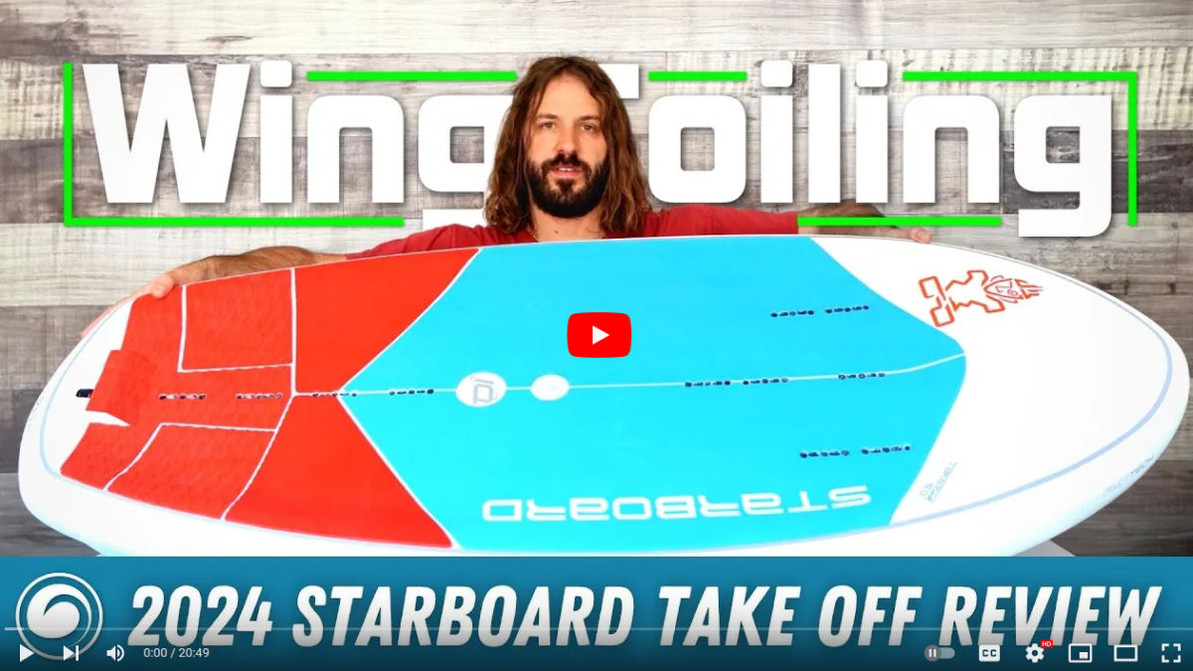2024 Starboard Take Off | A Unique Design for Wing Foilers of All Abilities
The 2024 Take Off is a fresh design that applies what Starboard has learned from past versions. What's new, and how does that translate to the real world? Tucker has ridden it and has some insights to share.
Introduction
This board has kind of an alien shape. Starboard wanted to make the experience better without going with a standard shape. They're pushing the limits of design and construction to give you a unique model, and there are some cool advantages to this unique shape and some of the features that it has.
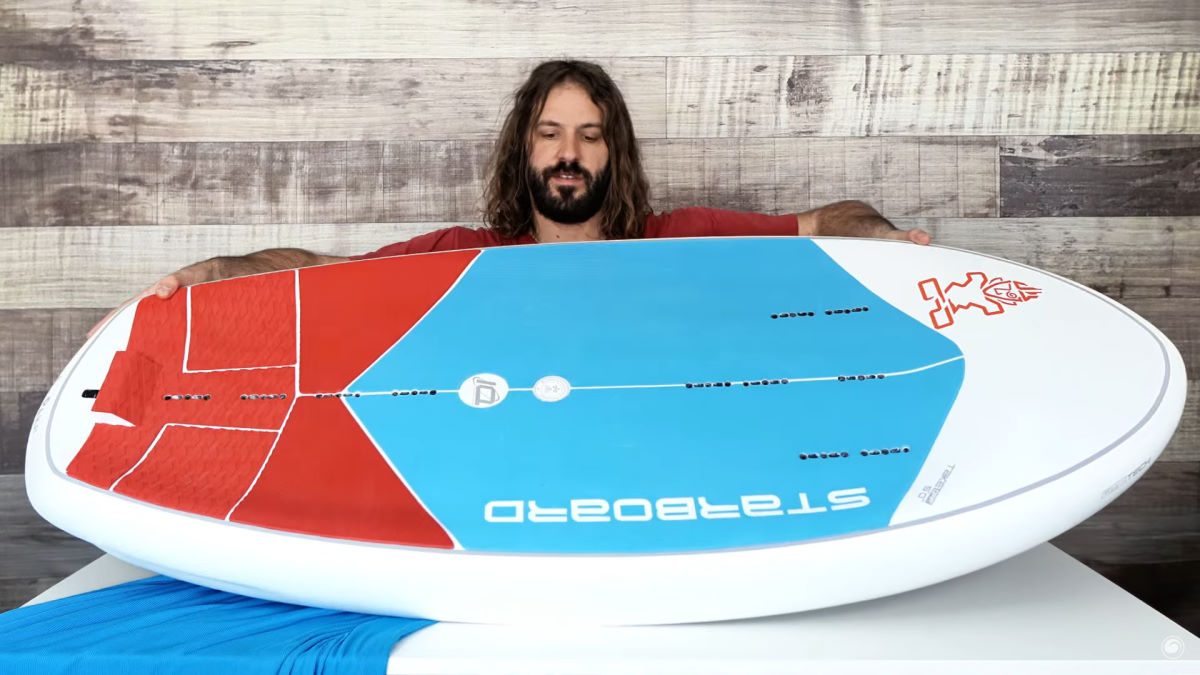
Features
Deck Contour
The deck has a big scoop in it, and it kind of looks like a skateboard deck, although the middle section is predominantly flat. That gives you the easiest transitions and foil control. Once you start to get up towards the rails, there's a bit more concave and ramp to it, so you won't put your foot too far to the edge of the board without realizing it and slip off or get your feet out of position. When you're on this board, you can tell where you're at without looking down at it, especially on the back foot. You're going to start to feel that ramp, so that's really neat.
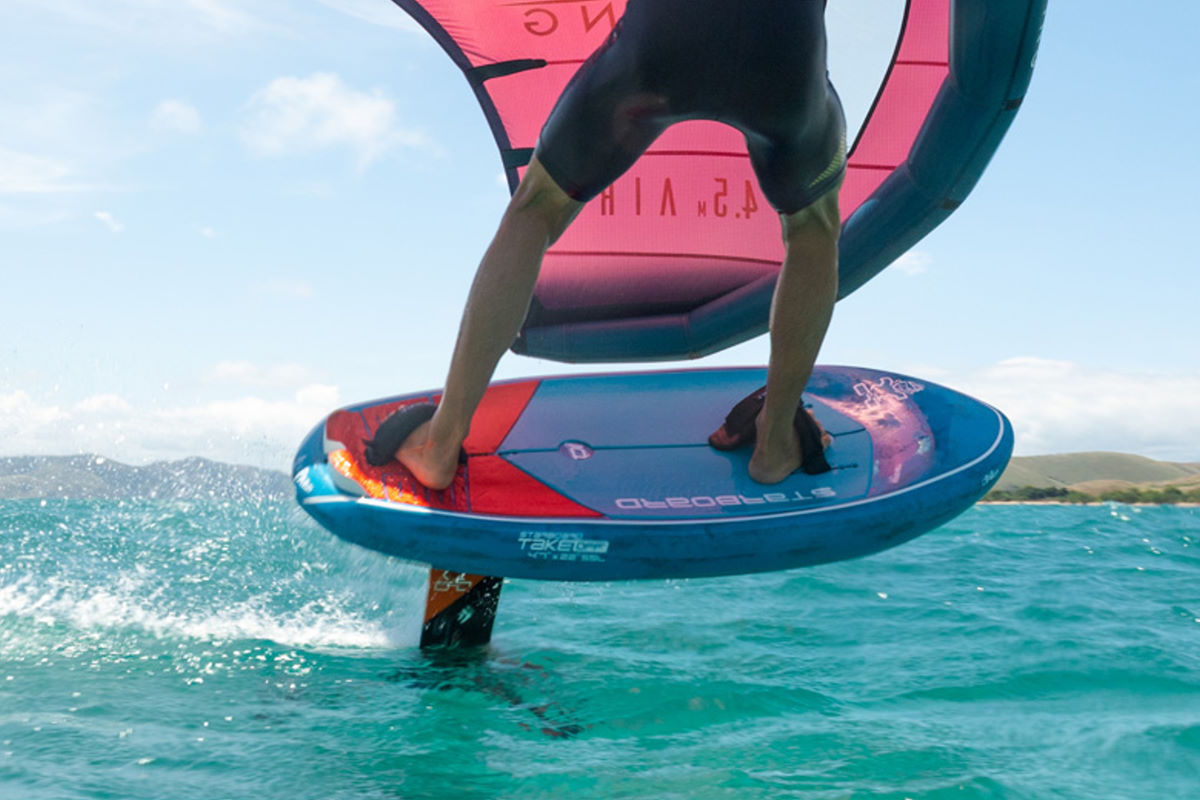
Deck Pads
The deck has different traction pad textures. Once you get further back by the kick tail, it has a diamond traction pad, and you can feel it and know where your foot is. Similarly, the middle red patch has a horizontal corduroy rather than the vertical corduroy throughout the center and front of the board. Those little details are really neat. It also has some holes in the pad, which at first just look graphical, but that is the sweet spot of the board where the center line of your body is going to be as you're riding, for the most part. With a lot of foils, you'll ride towards the front hole, but if you're riding more surfy and you want your feet a little further back with more board in front of your feet, you'll be closer to the back hole. It's a nice visual cue that you can also feel with your feet, and having those reference points is really cool.
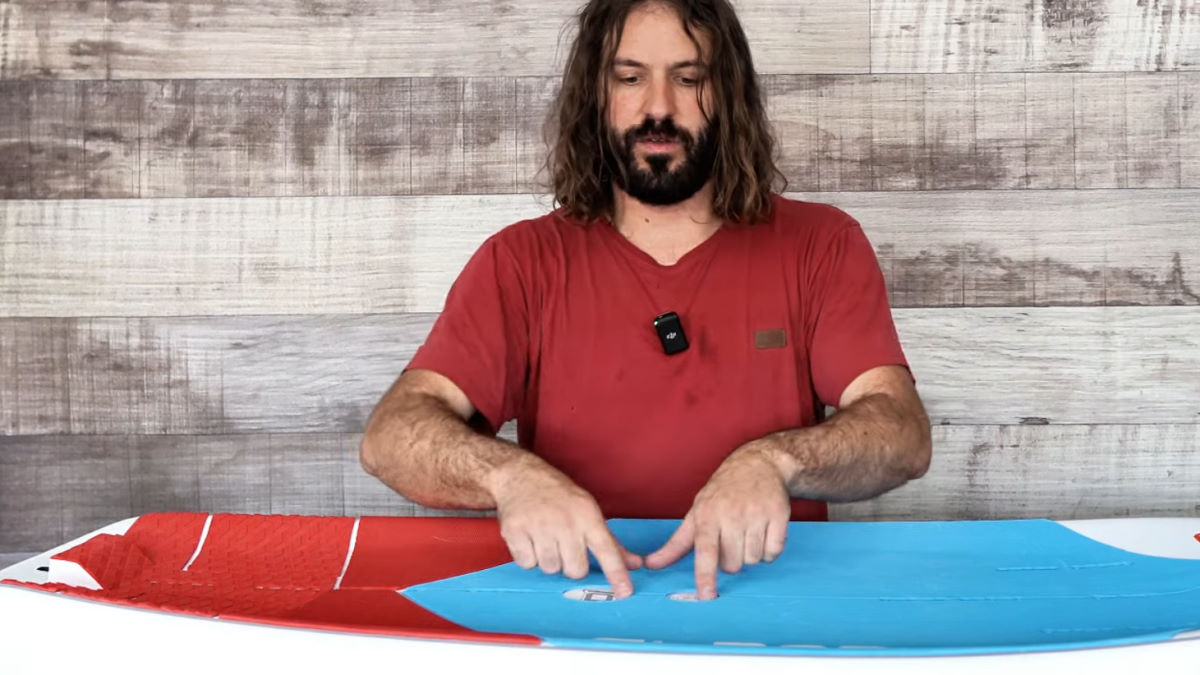
There is also a center reference line that lets you know where your feet are in relation to the center of the board. A lot of times I have the ball of my front foot over the forward center line, with my heel on the rear one. That's a nice offset for me with a lot of foils. The bigger the foil, the more aggressively you're riding and the more offset you're going to be. If you're riding a really small, reactive, twitchy foil, a lot of times you'd be right on the center line, so it's nice to know where that is, especially as you're switching feet and moving around. Having those references makes that a lot more intuitive.
Strap Inserts
The Take Off has some pretty visual strap inserts, which are unique compared to other boards that are drilled and you can't see them unless you put straps on. This one is a bit more open; they're countersunk into the traction pad, and they have a different hole pattern because of the way some of their straps work. The insert holes have a little spot in between for a keeper that drops into there so the washer doesn't twist and the strap stays neutral. (Note: With Starboard boards, you are going to need to use Starboard screws. They're about a millimeter thicker with some bigger threads, so these holes are drilled and tapped for those specifically and your standard screws are going to be a little too small for this. Don't use those, or you're just going to end up stripping it out since it's not going to hold in well. If you're ordering straps along with your board, just ask us and we can include some screws for you for free.) The holes have a wide span with a lot of options. No matter how your stance is or what foil you're riding, there's a strap option for everybody.
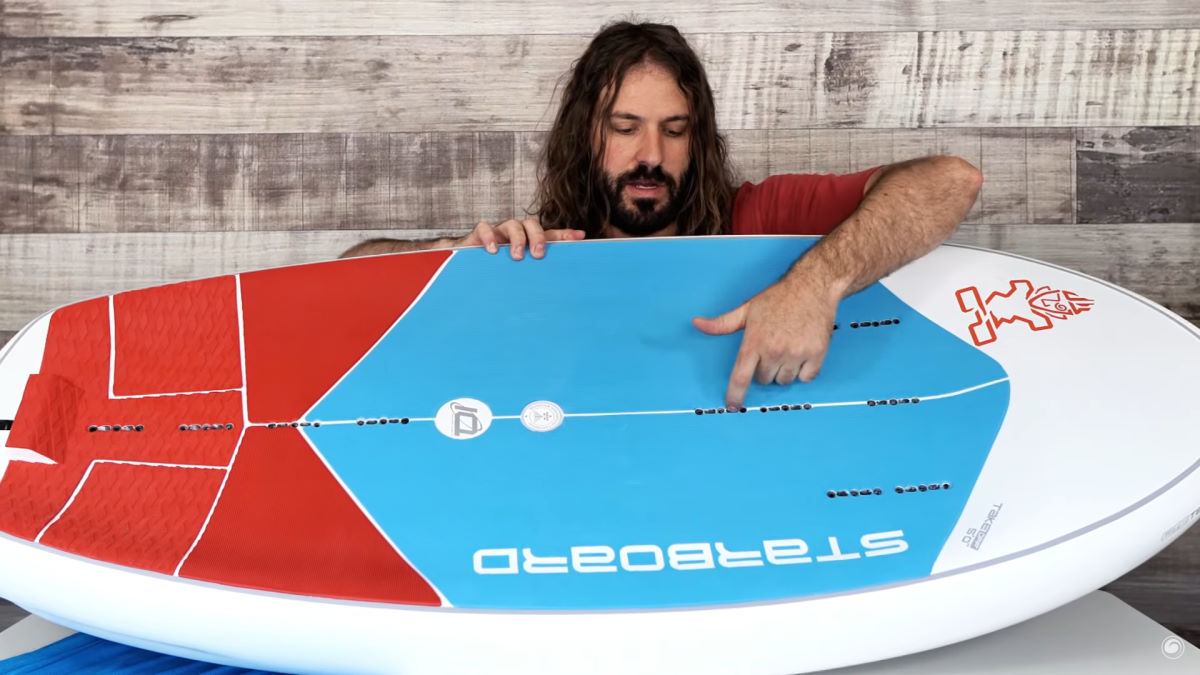
Nose
I find that my knees are somewhere in the middle of the bolt pack. You might look at it and wonder why your knees are way up there when you have so much board behind them. This board in particular has a lot of nose volume. There's some scoop in the nose rocker, and the concave deck doesn't continue through the front, so you get a little bit of a bulbous nose that's going to add some volume to keep the nose floating. It's really nice, especially in swell where the current and the waves might be pushing your board around. It's going to keep the nose from diving and daggering when you want to keep it at the surface of the water, and it does that really well. Also, when you're going through chop or you're kneeling on it, it redirects some of that water off and away from the rail so that it doesn't pool in the middle of the board. However, the concave runs all the way through the back, so the water just runs off if you're moving. That's part of the reason you have a partial kick tail, so there's lots of room for that water to flow off and it's not adding weight to your board. At first, I thought that water would pool up on the deck, but it does evacuate out really fast, and you don't even notice it. In swell, it's actually kind of nice to get a little bit of pooling, just to give the board a bit lower center of gravity as ballast.
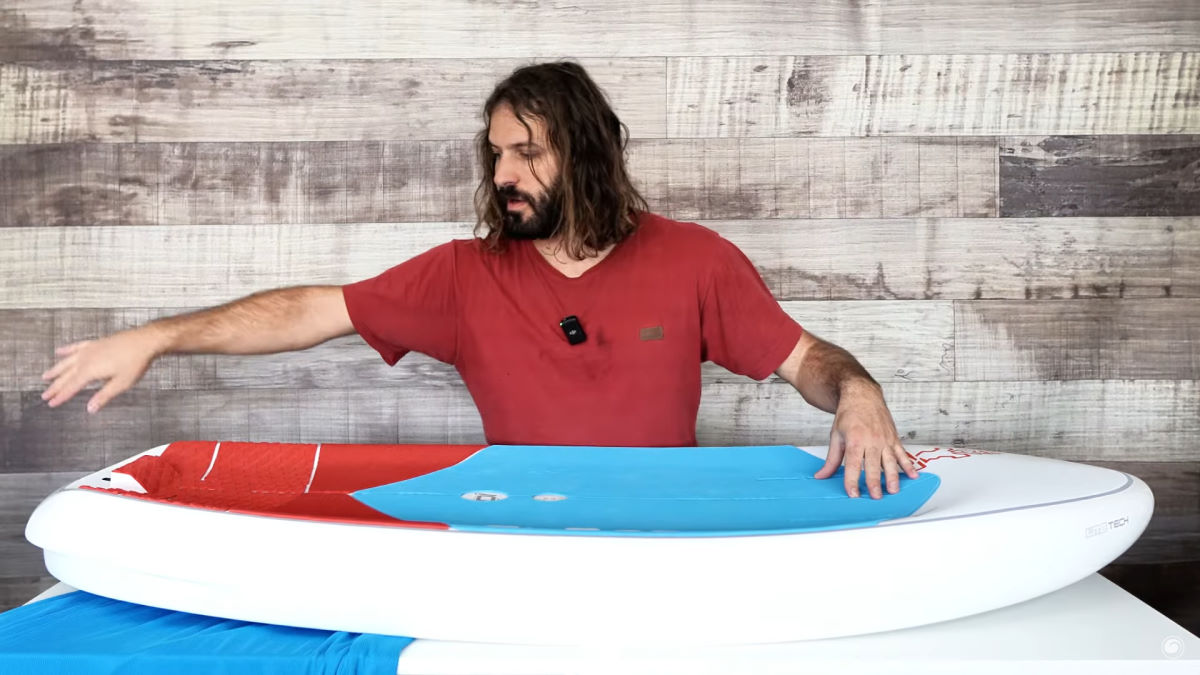
Rail Ramps
The ramps on the rail give you a nice handhold to rest on when you're trying to stand up. Having the traction pad go all the way to the rail and having those levers that you can hang onto is really nice for the board control. When you're kneeling, they're something to push against to balance or to know where you're at on the board so that you're not slipping off or ending up in the wrong position on the board and being unstable.
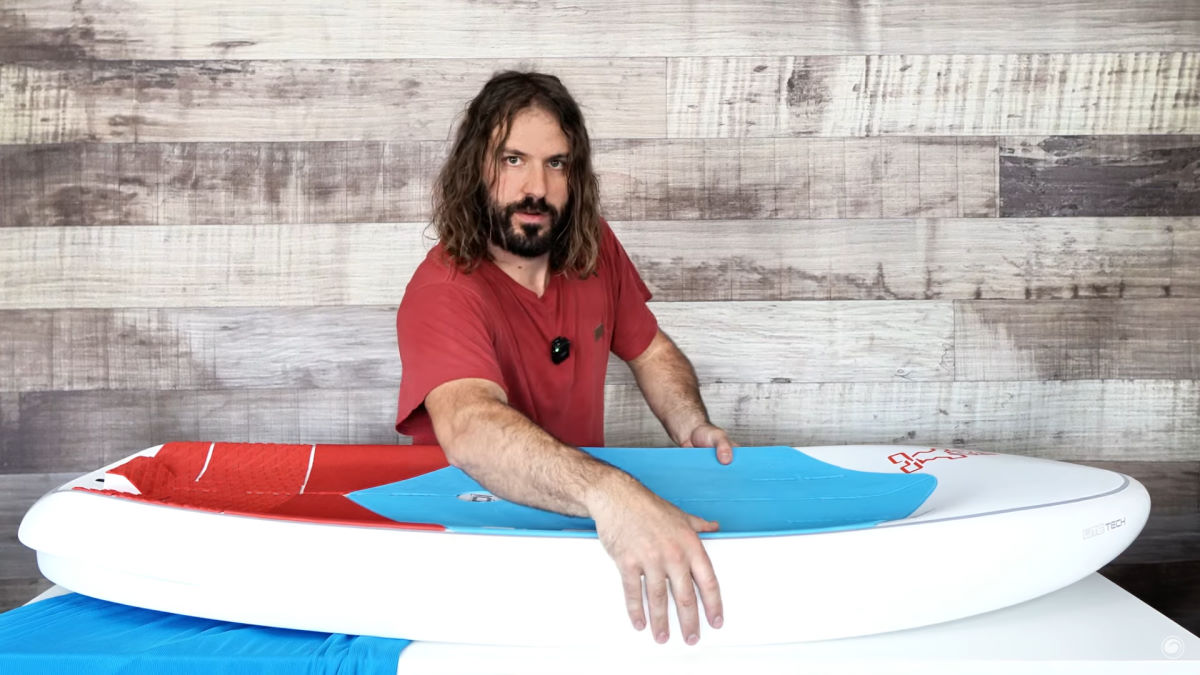
Planing Surface
The bottom is fairly simple with no real bells and whistles; just things that work. There is kick in the rocker with a mellow entry bleeding in towards a nice, flat tail. This bottom planes really well. It has hard edge rails that maximize use of the full width of the board to make sure every bit of this bottom is planing and getting you up on foil, which allows you to ride a little smaller board. In fact, the 75L felt like a little bit of overkill for me. I do like a board around 5 ft, but I wouldn't feel bad at all sizing down into the 60L models, unless I was going for light wind or if I was learning, and then I'd probably want to size up a little bit. Normally, this board should be ridden fairly close to your normal volume or maybe a little smaller since they are a little longer than average and they are very easy to ride and very efficient.
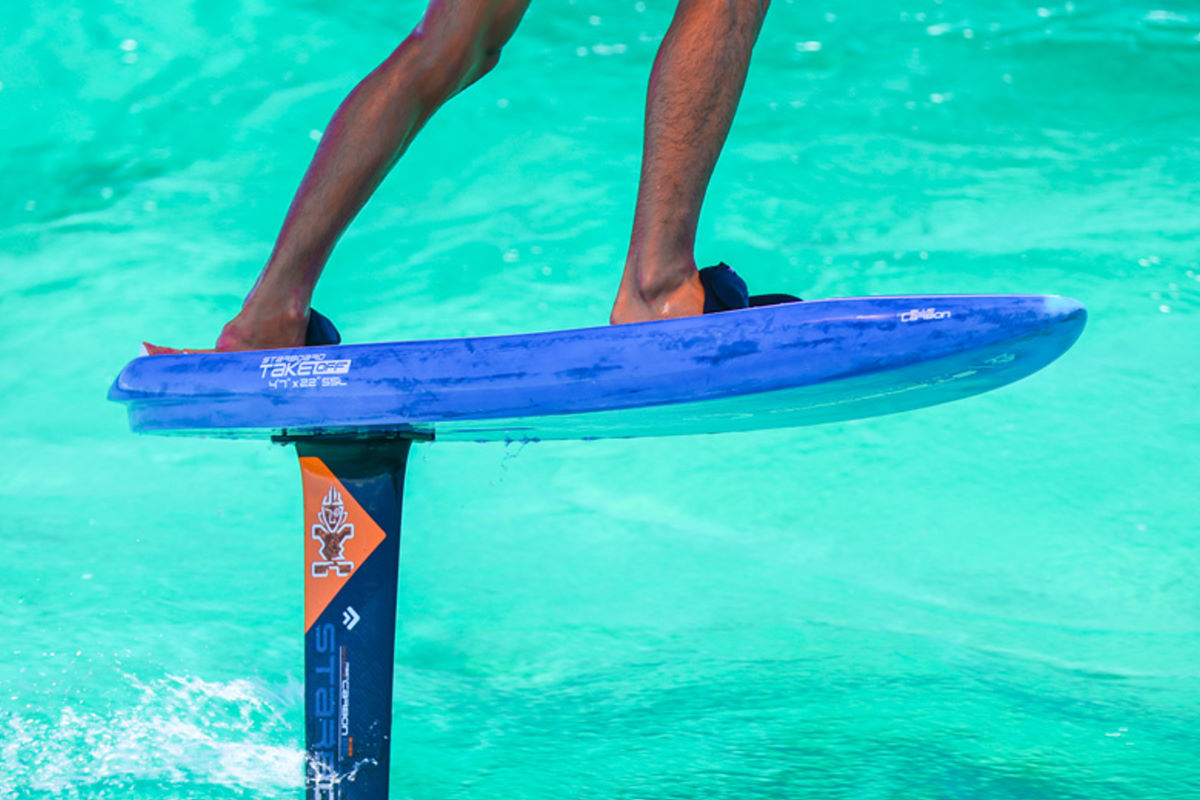
Handle and Track Box
There is a handle in the middle of the bottom, and it's a really comfortable handle. It goes in and under; it's not just square, so it's easy to hold onto. It's got a really long track box with a scale up front. It's about 2 inches longer than average, so no matter what foils you're using, whether they like to be ridden way up forward here or way in the back or somewhere in between, they are going to fit on this really well. I rode it with a North foil, and that was right in the middle of the box around your average spot, but some other foils could be ridden further forward or further back, depending on your setup and the brand. They give you a whole plethora of options, and one unexpected benefit of that was that I was able to slide my foil in with the nuts and screws in the plate without having to disassemble and realign them. That's not going to be the case for every foil, but for the one I was riding it worked really well.
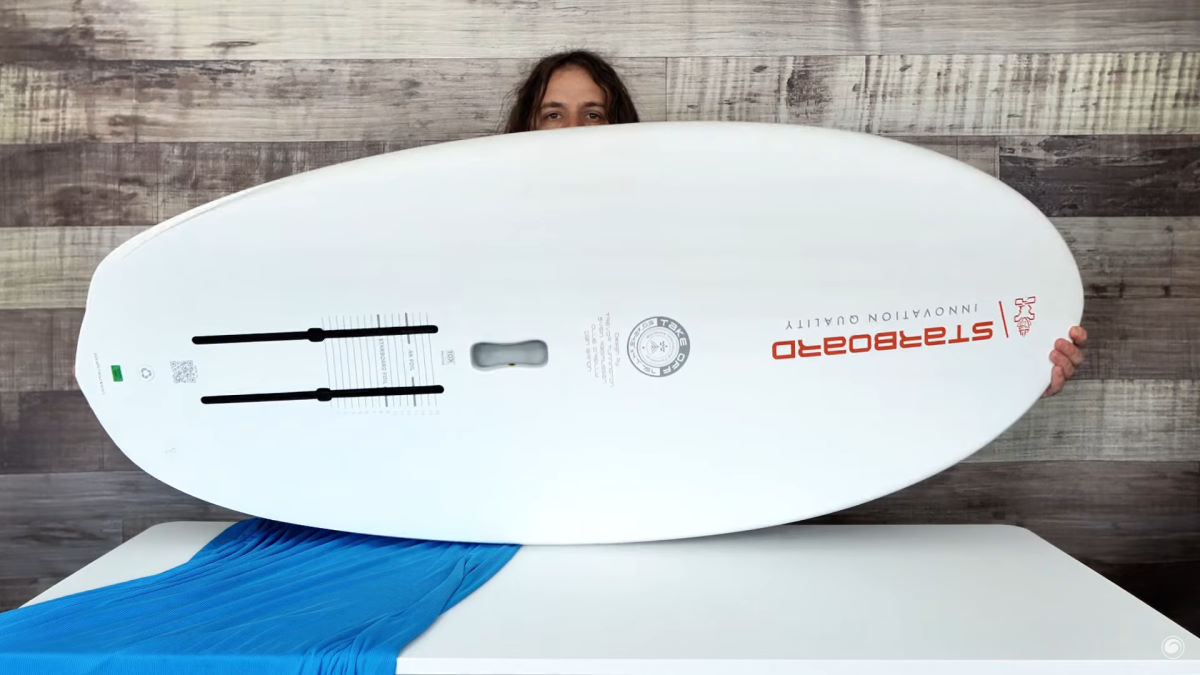
Tail
The tail has a thumb pintail sort of a shape with hard edges. Again, that's to keep that release clean, and it also keeps the edges of the board off the water when you're making hard turns and ripping it up out there. It's an efficient, functional tail. It also has a square tail shape that's offset about halfway down the rail. That gives you a little more stability and a bit more volume in the tail when you're knee starting, but for the most part it isn't doing a whole lot once you get riding.
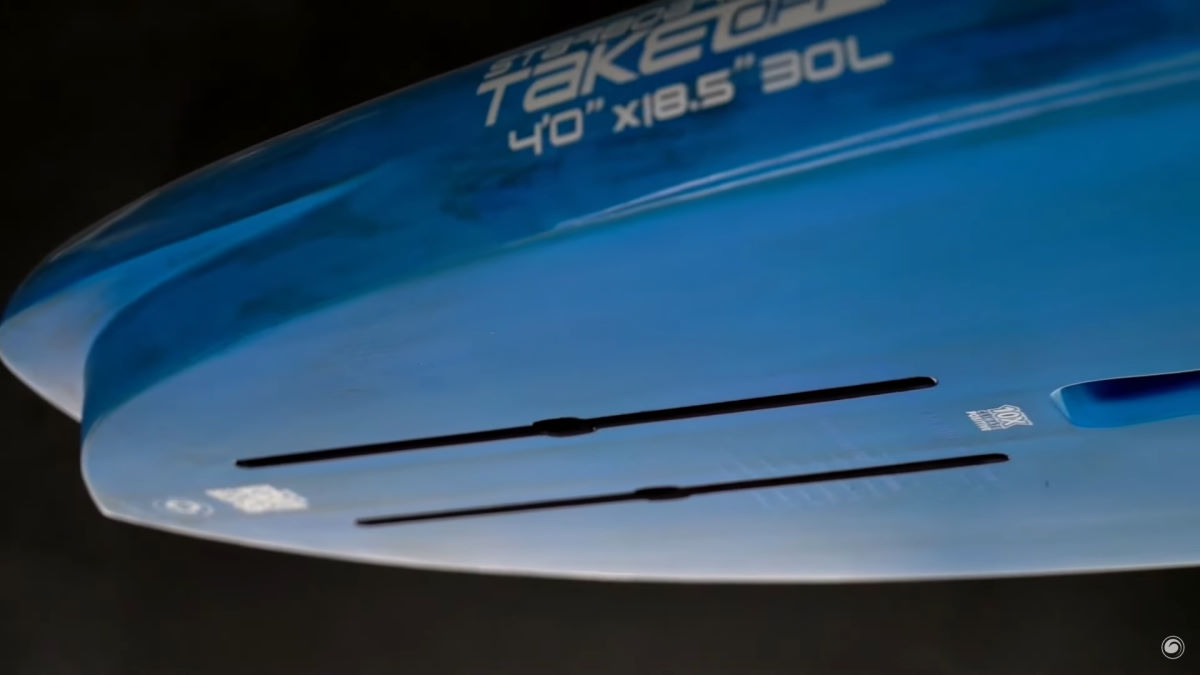
Construction
I rode the Lite Tech construction. This board also comes in the Blue Carbon construction in some sizes. The Blue Carbon is a little bit lighter weight and is a more eco-friendly construction. Starboard really goes a long way to make these boards have the least impact possible. Obviously, we're into wind sports and we love being out there in Mother Nature, so we'll take care of her. The Lite Tech is a little bit cheaper, and this is our most popular construction. It's really durable, so you can really beat on these boards. They're built tough, but still fairly light. The 75L I rode is about 15 lbs.
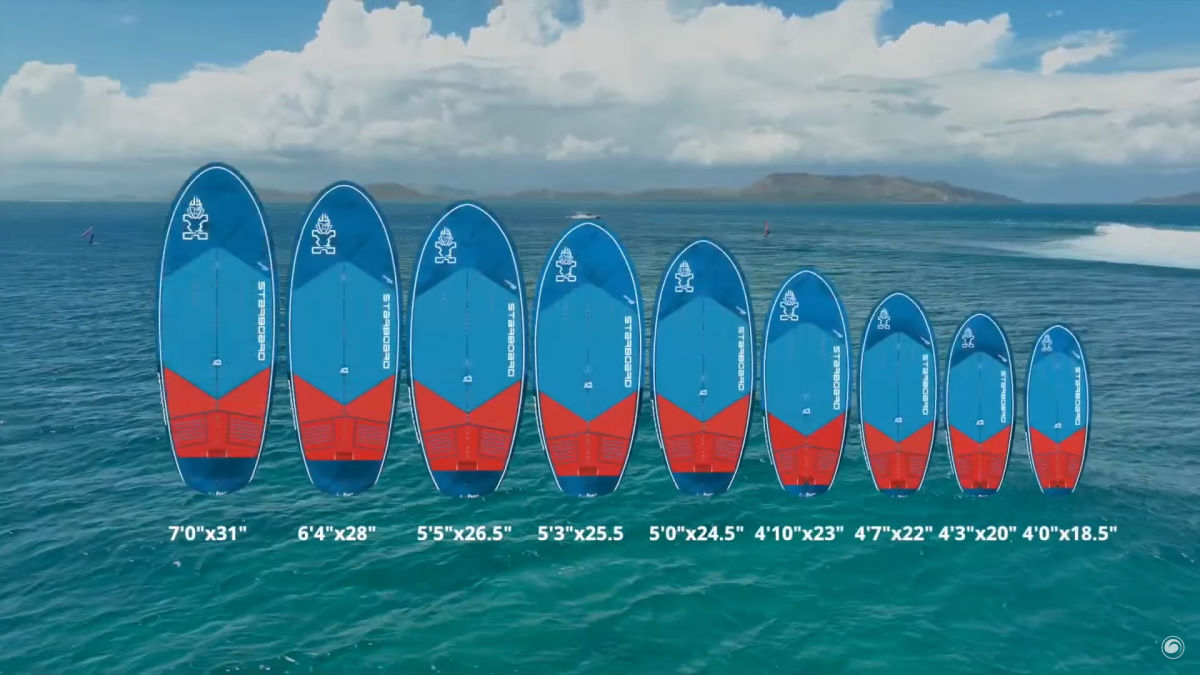
Accessories
It ships with a nice board sock. The Blue Carbon models come with three straps, but the Lite Tech construction does not, so if you need straps and you're buying the Lite Tech construction, be sure to add some straps.
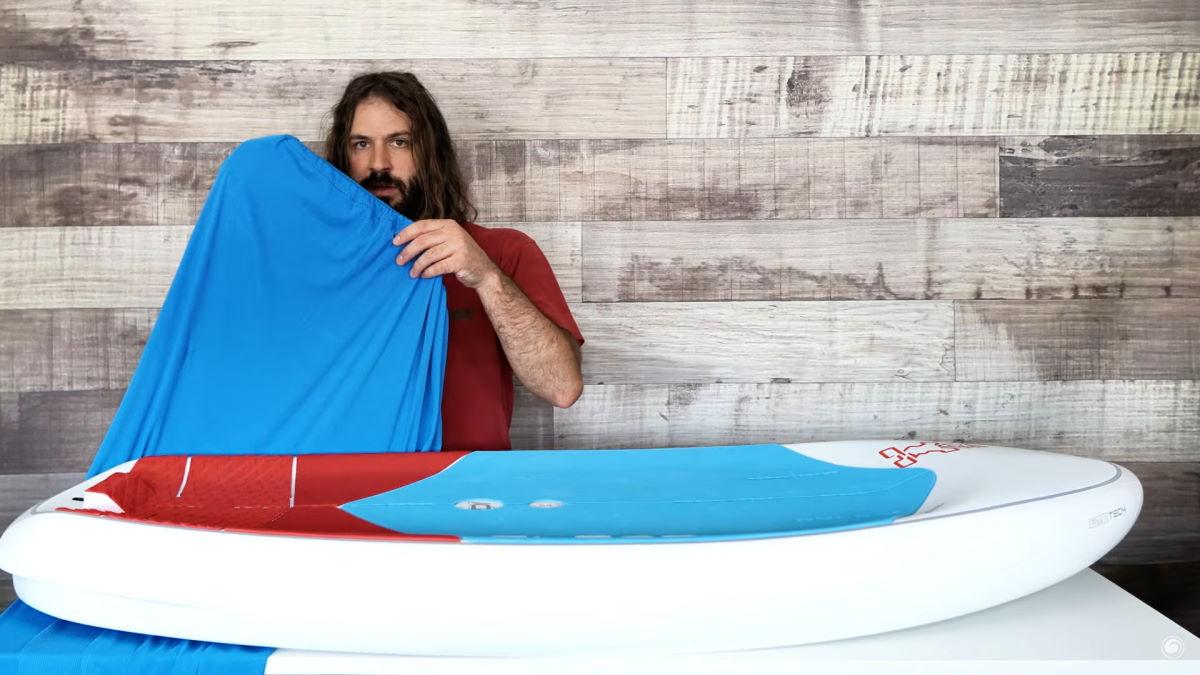
Tucker's Review
Who's It For?
After riding the Take Off a little bit, I feel this is a really good utility, do-it-all kind of a board. If I had to say it was best for anything in particular, I would say that for new riders it is a phenomenal board. Just make sure you get the right size; you're going to want something a little bigger as you're learning. This is a board you can definitely progress into, but it's also easy to learn on because of how stable and efficient it is. The price and the durability are bonus points. It's something you can grow into and appreciate as you reach your intermediate and advanced levels. Being so durable, it's a board that you can look forward to keeping for a number of years, and you won't need to reinvest in a larger board for light wind as you progress.
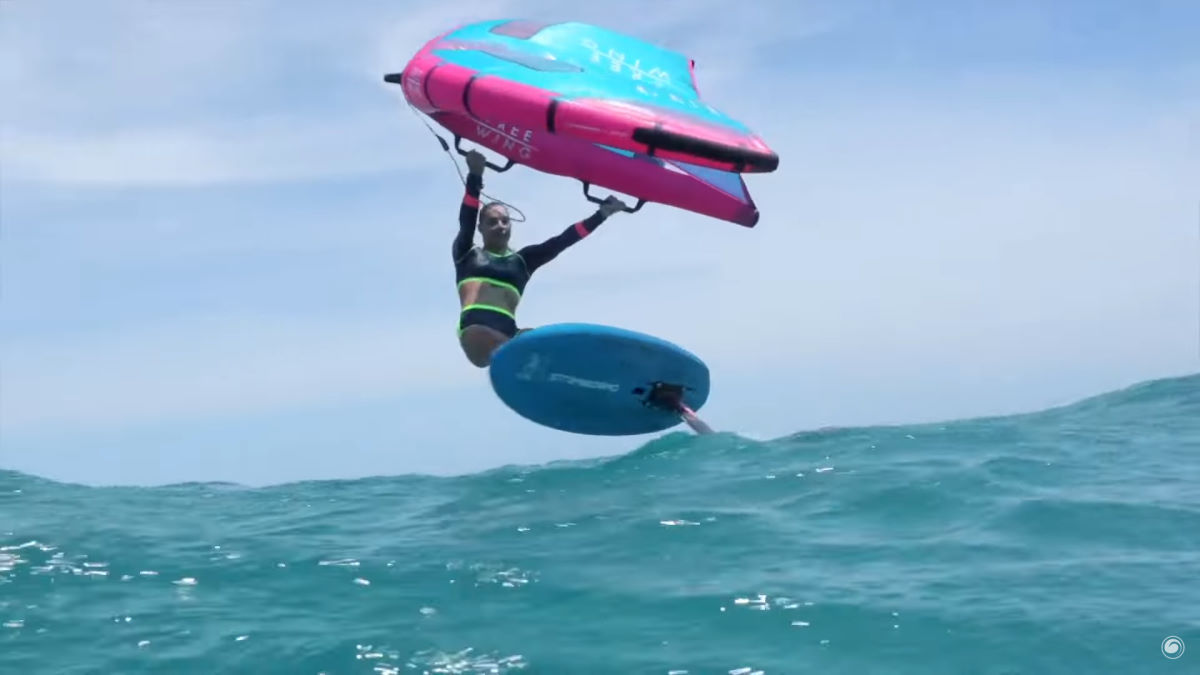
Value
I'm pretty stoked on these models. The Lite Tech construction is definitely one of the best values out there in the market in terms of what you get for what you pay. There are a lot of bells and whistles and a lot of design in these boards. It's not just a recycled model from four years ago; they're reinvesting in new molds in lots of good sizes. The two constructions give you the option of whether you want to spend a lot of money or not.
Waves
For those more experienced riders on the smaller sizes, this is a really fun board in the waves. It's a bit longer, a little narrower, and has a more pointed nose, so it's got a lot of the features that those advanced surf guys are going to want. If you're into that, I would size down slightly, maybe 5 to 10 liters, from what you would ride in a lot of other boards. That's going to give you the kind of performance that you want, and this board is so easy to ride that that shouldn't be a problem at all, as long as you have adequate power in your wing.
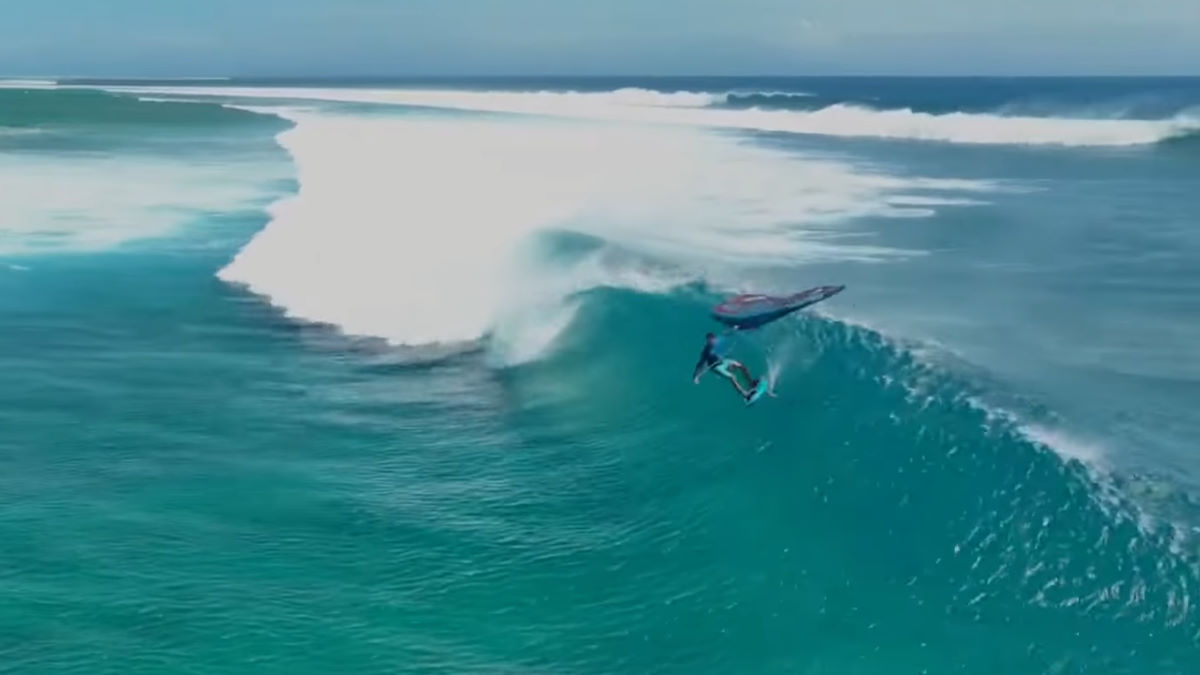
Freestyle
I would say this board's really great for freestyle, so if you're into jumping, spinning and that kind of stuff, these boards have a really nice shape and outline for that. They're not too cumbersome and they're really well designed. It has a good center of balance, and the strap placement is nice for landing on foil or for when you actually touch down and you need to lift off again. Pick a size that's going to be small enough for what you want to do, but be sure to have enough volume to land and take back off in the kind of winds that you're dealing with regularly. If you're doing jumps in lighter winds, you might want to size up slightly. If you're out there in nuking winds all the time, you don't need to worry about that. If you're a super lightweight rider, size down and get something smaller.
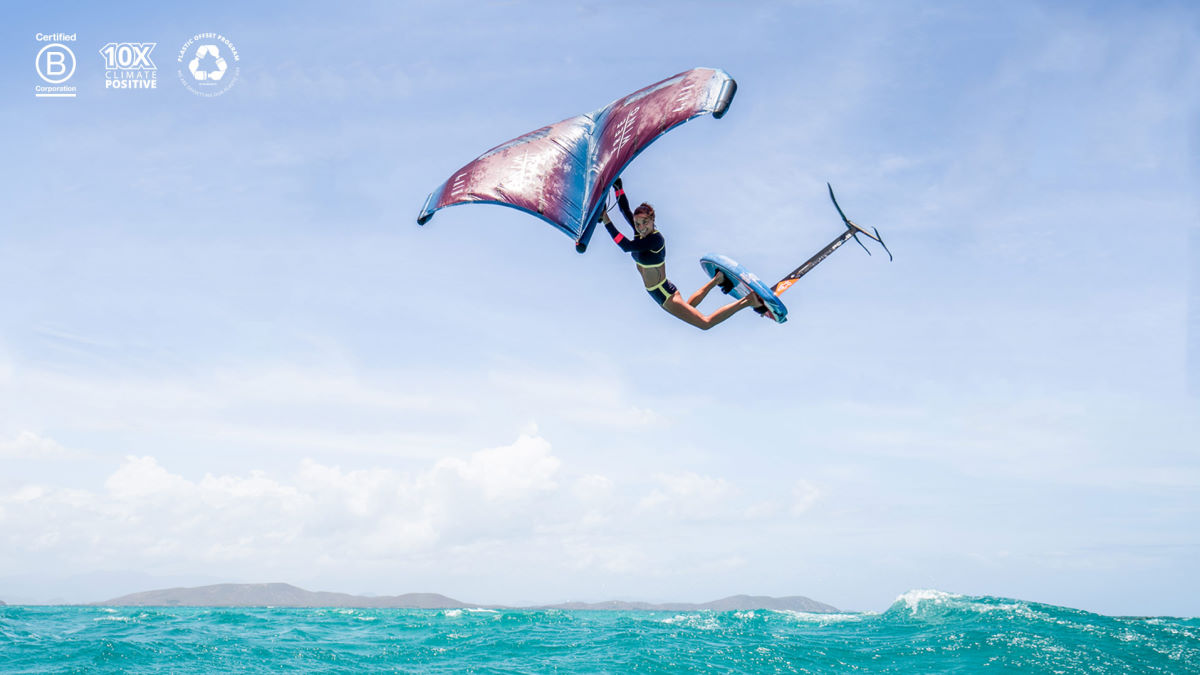
Tucker's Take
Personally, I'm a surf freeride guy most often, and I do some jumping, and I found that this board is a suitable option for all of that. It really wasn't a standout performer in any particular category, but it's happy to do what you want. It's a little wider than I would typically ride, which is part of the reason why I'd say I would size down slightly for a personal board for good winds. It does everything quite well, and it's a very reliable, do-it-all, versatile utility board, so I'm pretty stoked on that.
Tucker's Nitpicks
The only real gripe I have is that it's a little bit sticky on the touchdown. This has to do with the flat bottom and hard rails. It's really good for planing because of that, and it wants to act like a board that's bigger than it is when you're out there riding and looking to take off in lighter winds and less power but, when you touch down, it is a bit more sticky. It puts the brakes on a little more. It's not so much that it's a red flag by any means, but just an observation since we like to tell you how it is and come up with some kind of a negative to every product, because no product is perfect. You're not going to have every perfect attribute because sometimes they're at odds with one another, and that's what you get with boards that are super efficient; when they do touch down, they are a bit more sticky. That's really the only negative I would say about it, and if you're somebody that's not touching down a lot or you're riding foils that aren't really fast so that, when you touch down, you can rebound really quickly without having to build speed again, then it's a non-issue.
Summary
Obviously, the guys at Starboard know what they're doing; they've been making SUPs and windsurfers for a long time, and this board is a nice balance of all of those features. They've got some unique stuff going on that you wouldn't find in a more affordable board from most brands, so two big thumbs up for Starboard. It is a little heavier than your $2,000 boards, but you can always upgrade to the Blue Carbon if you're looking for that lighter weight, higher-end performance and price. This is one of the best boards at this price, so definitely take a peek at it if you're price-conscious and looking for a really good board. If you're looking for a board you can grow into, this is a good option.
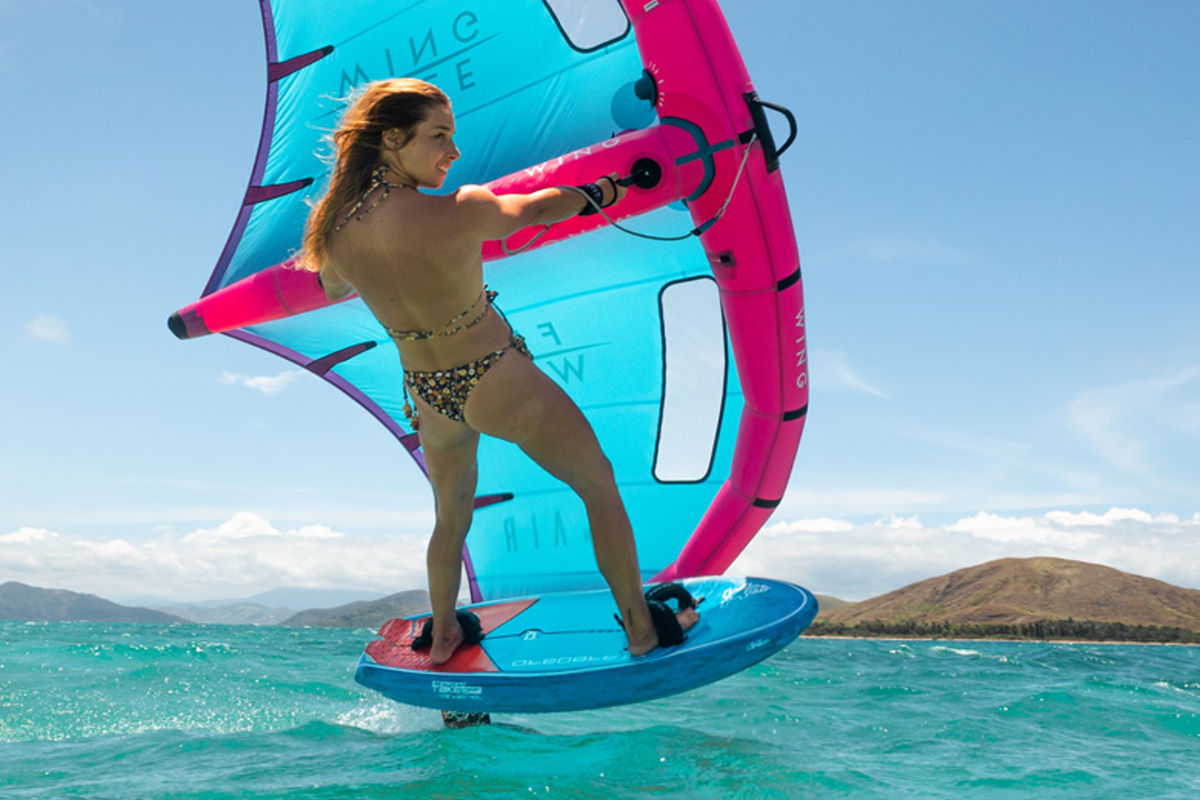
MACkite Subscription Links:
YouTube | Instagram | Spotify Oddcasts
Contact MACkite Below:
800.622.4655 | Kiteboarder@MACkite.com | LIVE Chat Messenger

Recent Posts
-
Mid-Length Boards or Downwind Boards | Which Is Better for Wing Foiling?
MACkite's top wingnuts, Tucker, Ryan, and Jeff, are chatting about boards today. Downwind …15th Oct 2024 -
2025 North Orbit Pro | A Closer Look at Its Vertical Lift and Flight Dynamics
David is in Prea, Brazil, where he's had a chance to get a couple sessions on the new 2 …14th Oct 2024 -
Is the Waydoo Evo eFoil Worth the Upgrade? Complete Review and Breakdown
The all-new Waydoo Evo eFoil is here. How is it different from the Flyer One Plus? Does i …8th Oct 2024

